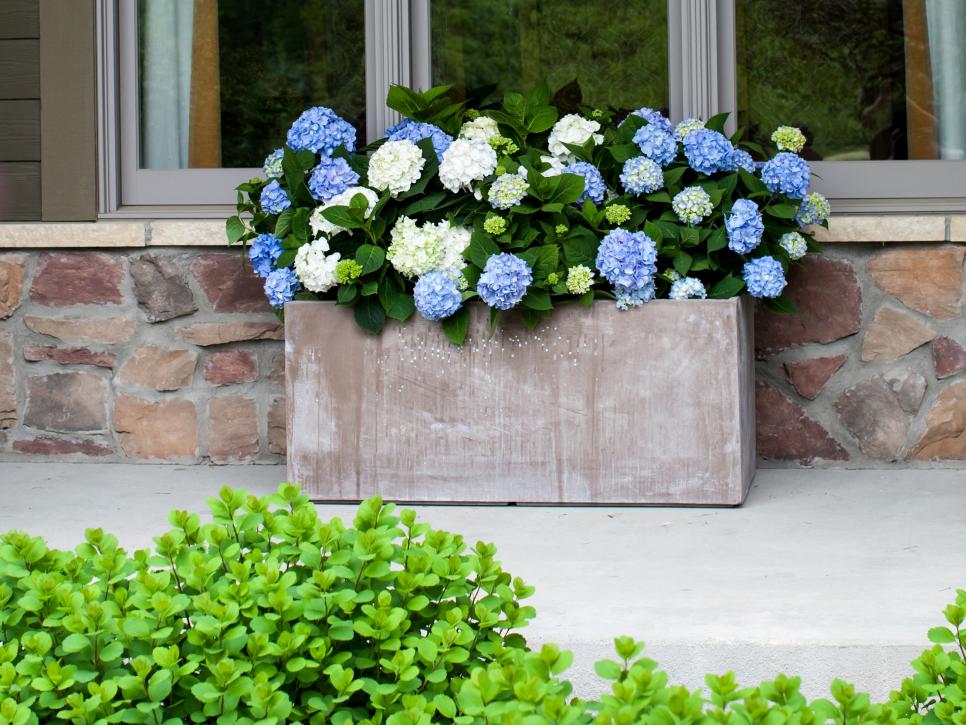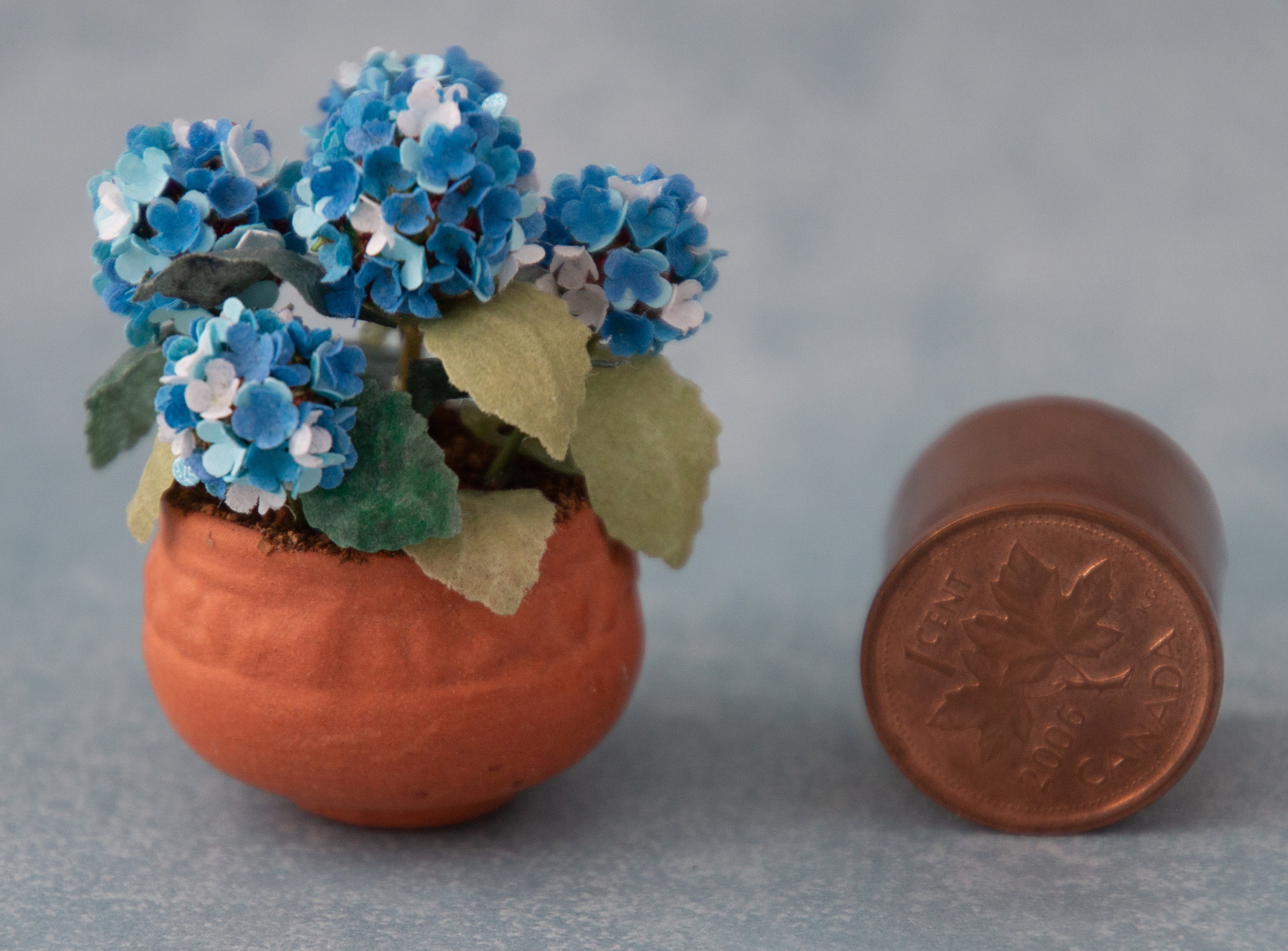How To Grow Blue Hydrangeas In Pots
Introduction
Hydrangeas are beautiful flowering shrubs that can be grown in a variety of settings, including pots. If you're looking for a way to add some color and interest to your patio or balcony, growing blue hydrangeas in pots is a great option.
Blue hydrangeas are a type of hydrangea that produces blue or blue-purple flowers. The color of the flowers is determined by the acidity of the soil. In alkaline soil, hydrangeas will bloom pink or red. In acidic soil, they will bloom blue or blue-purple.
Growing blue hydrangeas in pots is a relatively easy process. With a little bit of care and attention, you can enjoy beautiful blue hydrangeas for many years to come.
Main Content
1. Choosing the right pot
The first step to growing blue hydrangeas in pots is choosing the right pot. The pot should be at least 18 inches in diameter and have drainage holes in the bottom. The material of the pot is not important, but terracotta pots will help to keep the soil cool in hot weather.
2. Preparing the soil
The next step is to prepare the soil. Hydrangeas prefer acidic soil with a pH of 5.5 to 6.0. You can buy potting soil specifically designed for hydrangeas, or you can make your own by mixing equal parts peat moss, perlite, and compost.
3. Planting the hydrangea
Once you have the right pot and soil, you can plant your hydrangea. Place the hydrangea in the pot and fill in around the roots with soil. Be sure to firm the soil around the roots to remove any air pockets.
4. Watering and fertilizing
Hydrangeas need regular watering, especially during hot weather. Water the hydrangea deeply until the water runs out of the drainage holes. You may need to water the hydrangea daily during hot, dry weather.
Hydrangeas also need to be fertilized regularly. Fertilize the hydrangea once a month during the growing season with a balanced fertilizer. You can use a water-soluble fertilizer or a granular fertilizer.
5. Pruning
Hydrangeas do not require a lot of pruning. However, you may want to prune the hydrangea in the spring to remove any dead or damaged branches. You can also prune the hydrangea to control its size.
6. Overwintering
If you live in an area with cold winters, you will need to overwinter your hydrangea. Bring the hydrangea indoors and place it in a cool, dark location. Water the hydrangea sparingly during the winter months.
Conclusion
Growing blue hydrangeas in pots is a relatively easy process. With a little bit of care and attention, you can enjoy beautiful blue hydrangeas for many years to come.
If you're looking for beautiful blue hydrangeas to add to your garden, but don't have a lot of space, you may want to consider planting them in pots. Blue hydrangeas are relatively easy to grow in containers, and with a little care, they can thrive for years to come.
There are a few things you'll need to keep in mind when planting blue hydrangeas in pots. First, you'll need to choose a pot that is large enough for the plant to grow. The pot should be at least 18 inches in diameter, and it should have drainage holes in the bottom.
Second, you'll need to use a potting mix that is specifically designed for hydrangeas. This type of potting mix will be slightly acidic, which is what blue hydrangeas prefer.
Once you've chosen a pot and potting mix, you can plant your blue hydrangea. Be sure to plant it at the same depth that it was growing in its nursery pot.
After planting, water your blue hydrangea thoroughly. You'll need to water it regularly, especially during hot weather. You may also want to fertilize your blue hydrangea once a month during the growing season.
With a little care, your blue hydrangeas will thrive in their pots for years to come. For more information on growing blue hydrangeas in pots, I recommend visiting .
FAQ of blue hydrangea in pots
- What is the most common blue hydrangea?
The most common blue hydrangea is the Nikko Blue hydrangea. It is a hardy shrub that can grow up to 6 feet tall and wide. It blooms in late spring and early summer, with large, round clusters of blue flowers.
- What do blue hydrangeas need?
Blue hydrangeas need acidic soil with a pH of 5.5 or lower. They also need full sun or partial shade and regular watering. To maintain the acidity of the soil, you can add peat moss or sulfur to the soil every year.
- How do I get blue hydrangeas to bloom blue?
The pH of the soil determines the color of hydrangea flowers. Blue hydrangeas will bloom blue in acidic soil, pink in alkaline soil, and purple in soil with a pH between 5.5 and 6.5. To get blue hydrangeas to bloom blue, you can add peat moss or sulfur to the soil to lower the pH.
- How do I care for blue hydrangeas in pots?
Blue hydrangeas in pots need to be watered regularly, especially during hot weather. They also need to be fertilized every few weeks with a balanced fertilizer. To prevent the roots from rotting, you should use a pot with drainage holes and plant the hydrangea in a potting mix that is designed for acid-loving plants.
- How do I overwinter blue hydrangeas in pots?
If you live in an area with cold winters, you will need to bring your blue hydrangeas indoors during the winter. Place the pot in a cool, dark location and water it sparingly. In the spring, you can bring the hydrangea back outdoors once the weather has warmed up.
Image of blue hydrangea in pots
- A large blue hydrangea in a white pot, sitting on a patio. The hydrangea is in full bloom, with its large, round flowers cascading over the sides of the pot. The white pot provides a striking contrast to the blue flowers.

- A group of blue hydrangeas in different sized pots, arranged on a windowsill. The hydrangeas are all in full bloom, with their flowers ranging in shades of blue from light to dark. The pots are all different colors and sizes, which adds to the visual interest of the display.

- A single blue hydrangea in a terracotta pot, sitting on a wooden deck. The hydrangea is in full bloom, with its flowers cascading over the sides of the pot. The terracotta pot provides a warm and earthy contrast to the blue flowers.

- A small blue hydrangea in a hanging basket, cascading down from a porch railing. The hydrangea is in full bloom, with its flowers cascading down from the basket. The hanging basket allows the hydrangea to be displayed in a vertical space, and the flowers provide a splash of color to the porch.

- A group of blue hydrangeas in pots, arranged in a row on a garden path. The hydrangeas are all in full bloom, with their flowers ranging in shades of blue from light to dark. The pots are all the same color, which creates a sense of uniformity.
Post a Comment for "How To Grow Blue Hydrangeas In Pots"